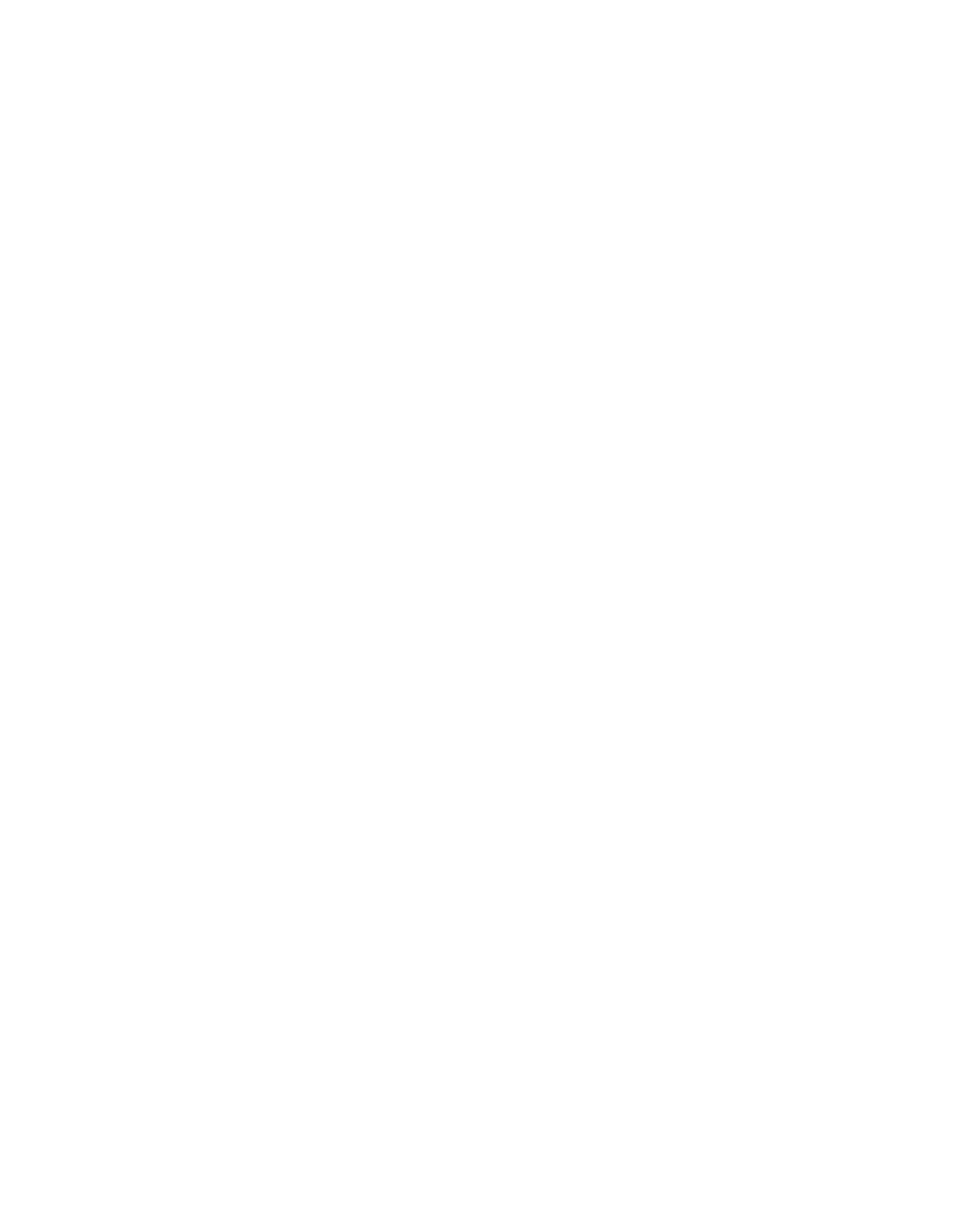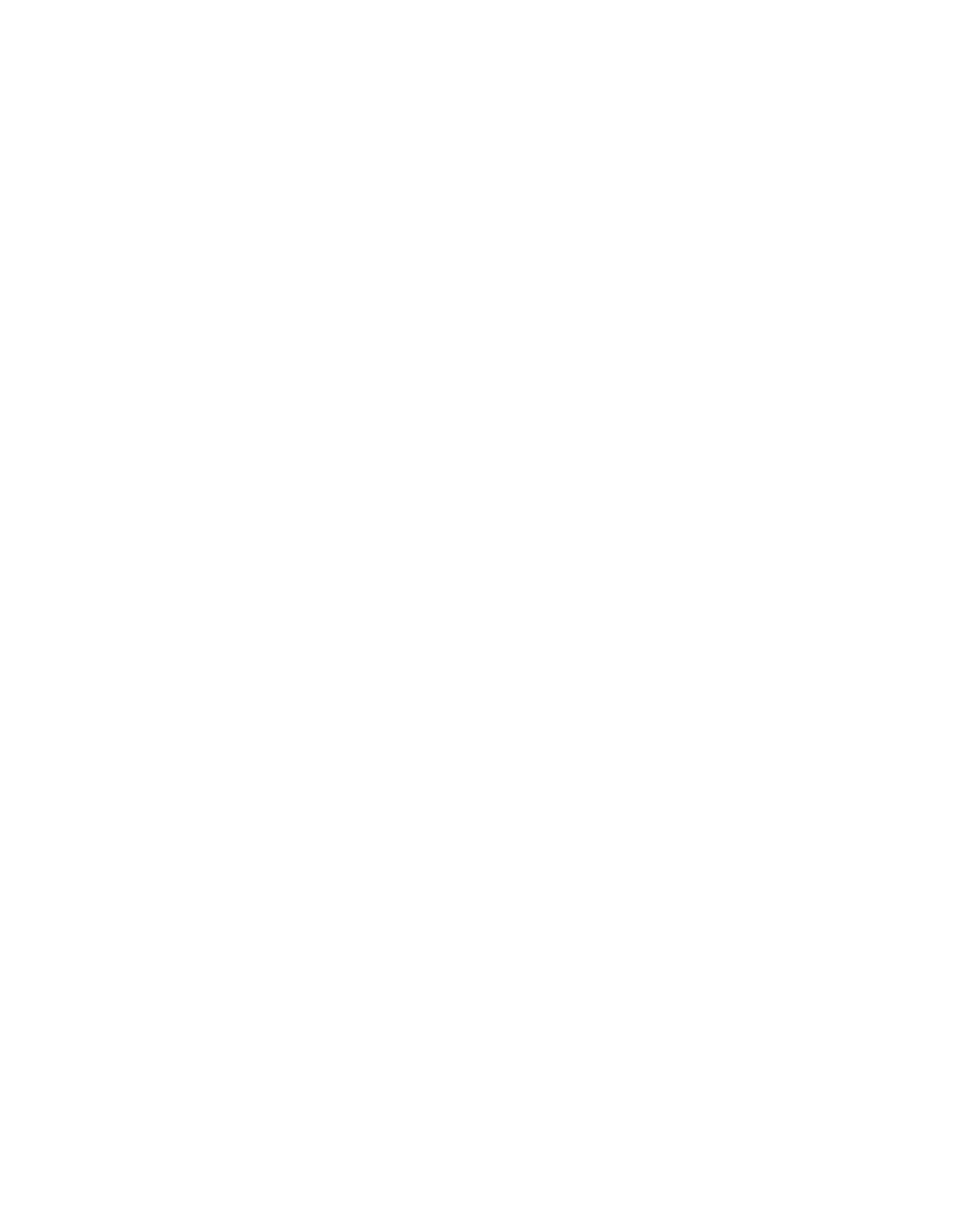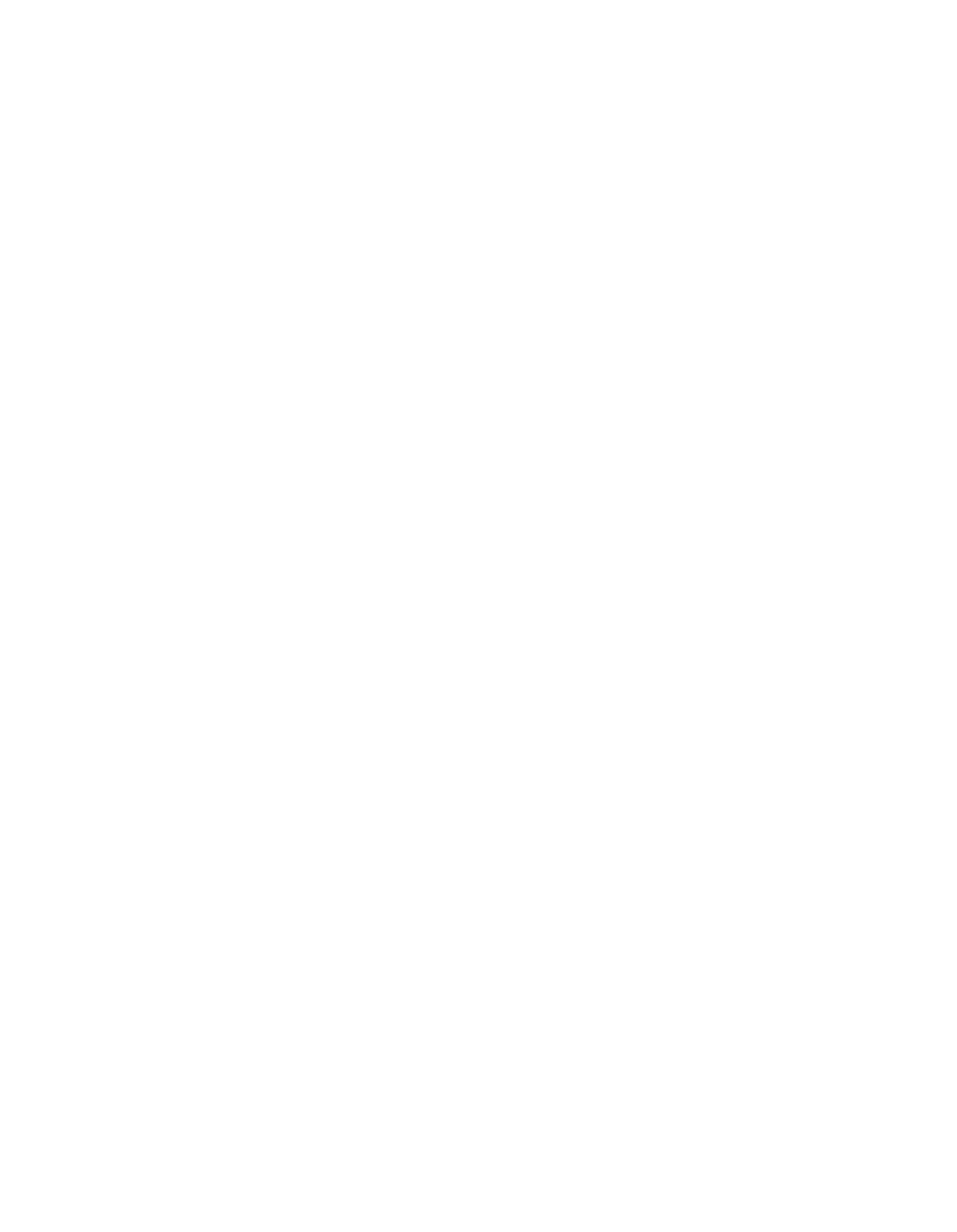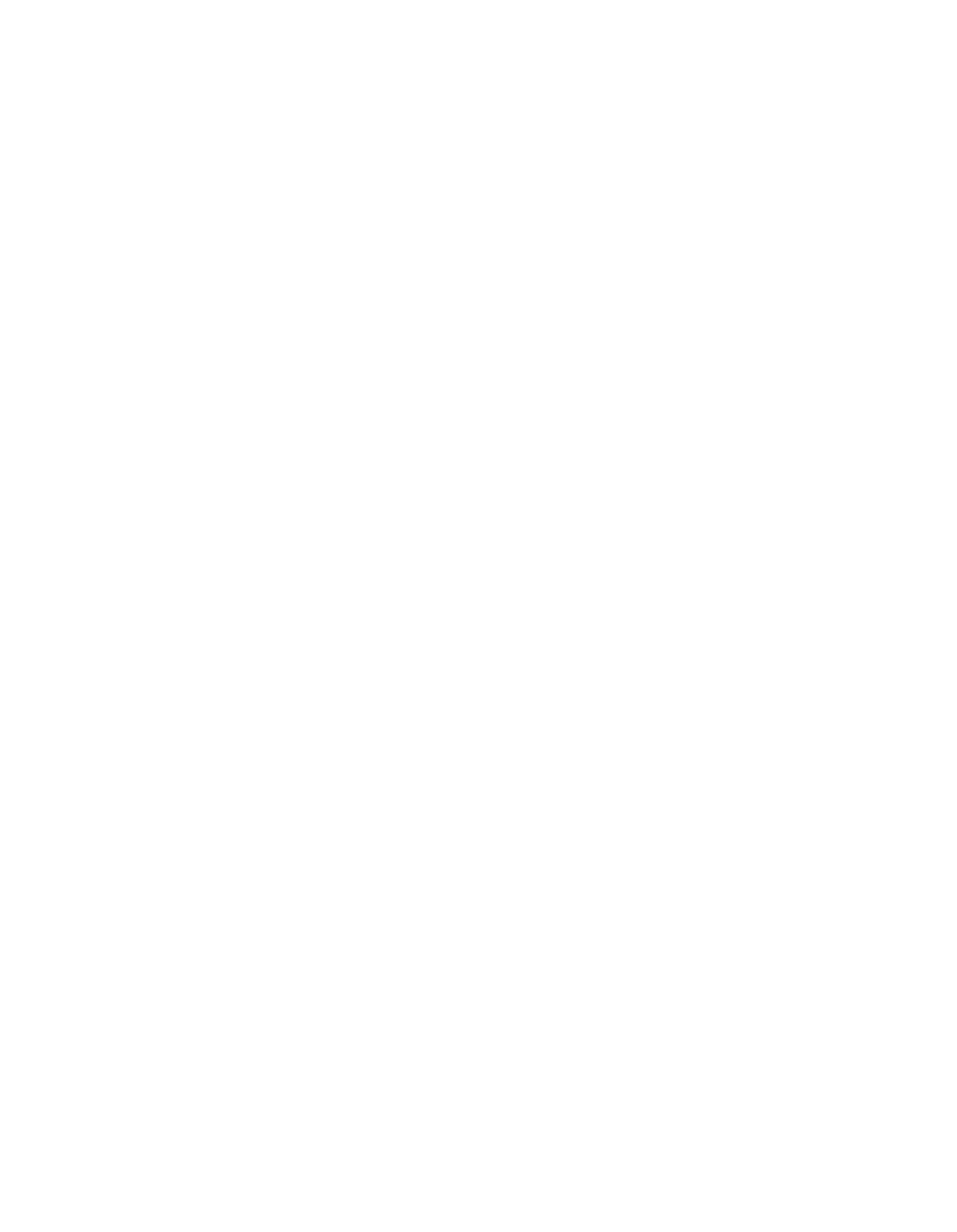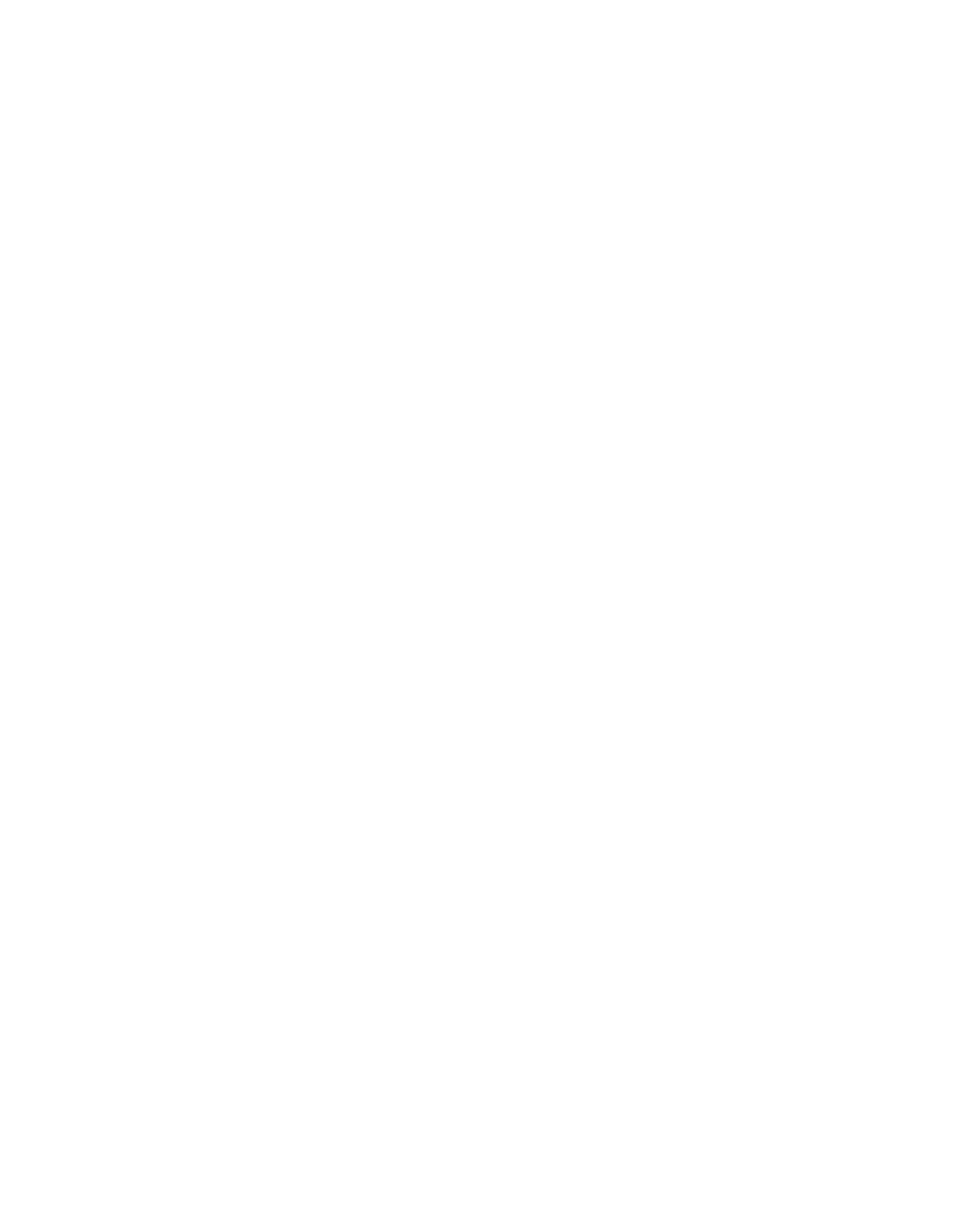ILLINOIS POLLUTiON CONTROL BOARD
U
~)A
1flr~I~
~ay
L~?~
IN THE MATTER OF:
)
)
RCRA UPDATE, USEPA REGULATIONS
)
R90—1O
TCLP
(1-1-90 THROUGH 3-30-90)
)
(Rulemaking)
PROPOSAL
FOR
PUBLIC COMMENT
PROPOSED OPINION
OF THE
BOARD
(by 3.
Anderson):
By
a
separate Order, pursuant
to
Section 22.4(a)
of the Environmental
Protection Act
(Act),
the Board
is
proposing to
amend the RCRA hazardous waste
regulations.
Section 22.4 of the Act governs adoption
of regulations establishing
the
RCRA program
•in
Illinois.
Section
22.4(a) provides
for quick
adoption
of
regulations
which are
“identical
in
substance”
to federal regulations;
Section 22.4(a) provides that Title
VII of
the Act and Section
5
of the
Administrative Procedure Act shall
not
apply.
Because this rulemaking
is
not
subject
to Section
5
of the Administrative Procedure Act,
it
is
not
subject
to
first notice
or to
second
notice
review by the Joint Committee on
Administrative Rules
(JCAR).
The federal RCRA regulations are
found
at
40 CFR
260 through
270.
This rulemaking
updates Illinois’ RCRA rules
to correspond
with federal amendments during the
period January
1
through March
30,
1990.
The Federal Registers utilized
are as follows:
55 Fed.
Reg.
2354
January
23, 1990
55 Fed.
Reg.
5340
February
14,
1990
55 Fed. Reg.
6640
February 26,
1990
55
Fed. Reg. 8948
March
9,
1990
55 Fed. Reg.
11798
~iarch
29 1990
The USEPA amendments
include several
site—specific delistings.
As
provided
in
35
Ill. Adm. Code 720.122(d), the Board will
not adopt site-
specific delistings
unless and until
someone
files
a
proposal
showing why the
delisting
needs
to
be adopted
as
part of
the Illinois program.
In accordance with Section
7.2(b)
of the Act,
the Board
normally
“batches” USEPA actions
into six-month periods
for adoption
as
State rules.
in this Docket
the Board
has departed from its
normal
practice,
and has taken
a three-month batch.
The Board
has done this
in order
to quickly adopt
the
new Toxicity Characteristic Leaching Procedure
(TCLP)
rules
from the March
29
Federal
Register.
This
is changes
to the definition
of “hazardous waste’
which will
become effective
as
federal
rules
on September 25,
1990.
Since
they are adopted pursuant
to the Hazardous
and Solid Waste Amendments
(HSWA)
to
the RCRA Act, they will
supersede State law prior
to
adoption by the
State.
The
result would
be
an unsatisfactory situation
in which the
definition
of “hazardous waste” would
be substantially different
in State
and
federal
law, pending State action.
The Board anticipates
that
it
will
be able
to
adopt and
file these rules
by September
25,
but cautions that
it may be
necessary
to omit the post-adoption coment
period
to
do
so.
111—519
_2.
The
Preamble
to
the
March
29
rules
includes
a
statement
that
there
are
delayed
compliance
dates
for
the
TCLP.
While
large
quantity
generators
are
required to comply
by September 25,
1990, small
generators have
until
March
29,
1991.
This does not
appear
to
be
contained
in the body of the
rules.
The
Board
solicits
coninent
as
to whether
it ought
to
add a rule with
a delayed
compliance date for small
quantity generators.
EXTENSION OF TIME ORDERS
Section 7.2(b)
of
the Act
requires that identical
in substance
rulemakings
be completed within one year after the first USEPA action
in
the
batch period.
If
the Board
is unable
to
do
so
it
must enter
an
“extension of
time”-
Order.
HISTORY OF RCRA,
UST and
UIC ADOPTION
The Illinois RCRA,
UST (Underground Storage Tanks)
and
UIC
(Underground
Injection Control) regulations, together with more stringent State regulations
particularly applicable
to hazardous waste,
include the following:
702
RCRA and
U1C
Permit Programs
703
RCRA Permit Program
704
U1C
Permit Program
705
Procedures for Permit
Issuance
709
Wastestream Authorizations
720
General
721
Identification and Listing
722
Generator Standards
723
Transporter Standards
724
Final
TSD Standards
725
Interim Status TSD Standards
726
Specific Wastes and Management Facilities
728
USEPA Land Disposal
Restrictions
729
Landfills:
Prohibited Wastes
730
UIC Operating Requirements
731
Underground Storage Tanks
738
Injection Restrictions
Special
procedures
for RCRA cases
are included
in Parts 102,
103,
104 and
106.
Adoption
of these
regulations
has proceeded
in
several
stages.
The Phase
I
RCRA regulations were adopted
and amended
as follows:
R8l-22
45
PCB
317, February 4,
1982,
6 Ill. Reg. 4828, April
23,
1982.
R82-l8
51
PCB 31,
January
13,
1983,
7 Ill. Reg.
2518, March
4,
1983.
Illinois received
Phase
I
interim authorization on May
17,
1982
(47 Fed.
Reg. 21043).
The UIC regulations were adopted
as
follows:
RSl—32
47 PCB
93,
May
13,
1982;
October
15,
1982,
6 ill. Reg. 12479.
111—520
The
LJIC regulations were amended
in R82-18, which
is
referenced above.
The UIC regulations
were also amended
in R83—39:
R83-39
55 PCB
319, December
15,
1983;
7 Ill. Reg.
17338, December 20,
1983.
Illinois received
UIC authorization February
1,
1984.
The
Board has
updated
the UIC regulations:
R85—23
70 PCB 311, June 20,
1986;
10 Ill. Reg. 13274,
August
8,
1986.
R86—27
Dismissed
at
77
PCB 234, April
16,
1987
(No USEPA amendments
through 12/31/86).
R87-29
January
21,
1988;
12
Ill.
Reg. 6673, April
8,
1988;
(1/1/87
through
6/30/87).
R88-2
June
16,
1988;
12 Ill. Reg. 13700,
August
26, 1988.
(7/1/87
through
12/31/87).
R88-17
December
15,
1988;
13
Ill.
Reg.
478,
effective
December
30,
1988.
(1/1/88
through
6/30/88).
R89—2
January 25,
1990;
14 Ill.
Reg.
3059, effective February 20,
1990
(7/1/88 through
12/31/88).
R89-11
Adopted May 24,
1990
(1/1/89 through 11/30/89).
R90-5
Dismissed March
22,
1990.
The Phase
II
RCRA regulations
included adoption
of Parts 703
and 724,
which established the permit
program and
final
TSD
standards.
The Phase
II
regulations were adopted
and amended
as
follows:
R82-19
53
PCB
131, July 26,
1983,
7
Ill. Reg.
13999, October
28,
1983.
R83—24
55
P08
31, December
15,
1983,
8 Ill. Reg. 200, January
6,
1984.
On September 6,
1984,
the Third District Appellate Court
upheld the
Board’s actions
in adopting R82-19 and R83—24.
(Comonwealth Edison
et
al.
v.
IPCB,
127 Ill.
App.
3d 446;
468
NE
2d
1339
(Third
01st.
1984).)
The Board updated
the RCRA regulations
to correspond with USEPA
amendments
in several
dockets.
The period
of the USEPA regulations
covered
by
the update
is indicated
in parentheses:
R84-9
64
PCB
427, June 13,
1985;
9 Ill.
Reg.
11964, effective July 24,
1985.
(through 4/24/84)
R85—22
67
PCB
175,
479, December
20,
1985 and January
9,
1986;
10 Ill.
Reg.
968, effective January
2,
1986.
(4/25/84
—-
6/30/85)
R86—1
71
PCB
110, July
11,
1986;
10 Ill. Reg. 13998,
August
22,
111—521
-4-
1986.
(7/1/85
-—
1/31/86)
R86-19
73 PCB
467, October 23,
1986;
10
Ill. Reg. 20630, December
12,
1986.
(2/1/86
——
3/31/86)
R86-28
75
PCB
306,
February
5,
1987;
and
76
PCB
195,
March
5,
1987;
11
Ill.
Reg.
6017,
April
3,
1987.
Correction
at
7.7
PCB
235,
April
16,
1987;
11
Ill. Reg. 8684, May
1,
1987.
(4/1/86
——
6/30/86)
R86—46
July 16,
1987; August
14,
1987;
11
Ill. Reg.
13435.
(7/1/86
—-
9/30/86)
R87-5
October 15, 1987;
11
Ill. Reg. 19230, November 30,
1987.
(10/1/86
-—
12/31/86)
R87—26
December
3,
1987;
12
Ill. Reg. 2450, January
29,
1988.
(1/1/87
—-
6/30/87)
R87-32
Correction
to R86-1; September
4,
1987;
11
111. Reg.
16698,
October
16,
1987.
R87-39
Adopted June 14,
1983;
12 Ill. Re9.
12999,
August
12,
1988.
(7/1/87
——
12/31/87)
R88—16
November
17,
1988;
13 Ill.
Reg.
447, effective December
28,
1988
(1/1/88
—-
7/31/88)
R89-1
September 13,
October 18 and November
16,
1989;
13 Ill.
Reg.
18278, effective November 13,
1989
(8/1/88
-—
12/31/88)
R89—9
March 8,
1990;
14 Ill. Reg. 6225,
effective April
16,
1990.
(1/1/89 through 6/30/89)
R9O—2
Proposed April
12,
1990,
14 111.
Reg. 6528 (7/1/89 through
12/31/89)
R9O—1O
This Docket
(1/1/90 through 3/30/90)
Illinois received
final
authorization
for
the RCRA program effective
January
31,
1986.
The Underground Storage Tank rules were adopted
in R86-1
and R36—28,
which
were
RCRA
update
Dockets
discussed
above.
They
are
currently
being
handled
in their own Dockets:
R88-27
April
27,
1989;
13
Ill. Reg.
9519,
effective June
12,
1989
(Technical
standards,
September 23,
1989)
R89—4
July
27,
1989;
13
Ill. Reg. 15010, effective September
12, 1989
(Financial
assurance, October
26,
1989)
R89—1O
February
22,
1990
(Initial
update,
through
6/30/89)
R89—19
Adopted
April
26,
1990
(UST State Fund)
111—522
—5—
R90-3
Proposed
March
8,
1990;
proposed
on
March
23,
1990
at
14
Ill.
Reg. 4406
(7/1/89
-
12/31/89)
The Board added
to the federal
listings
of hazardous waste
by listing
dioxins pursuant
to Section 22.4(d)
of
the Act:
R84—34
61 PCB
247, November 21,
1984;
8 111. Reg. 24562,
effective
December
11, i984.
This
was
repealed
by R35—22, which included adoption of USEPA’s dioxin
listings.
Section 22.4(d) was
repealed by
5.8.
1834.
The Board
has
adopted USEPA delistings
at
the request
of Amoco and
Envi rite:
R85-2
69
PCB
314, April
24,
1986;
10
Ill.
Reg. 8112,
effective lay
2,
1986.
R87-3O
June 30,
1988;
12
Ill. Reg. 12070, effective July
12,
1988.
The Board
has procedures
to
be followed
in cases
before
it
involving the
RCRA regulations:
R84-lO
62
PCB
87,
349, December 20,
1984
and January
10,
1985;
9 Ill.
Reg.
1383,
effective January
16,
1985.
The Board
also adopted
in
Part
106 special
procedures
to
be followed
in
certain determinations.
Part
106 was adopted
in R85—22
and amended
in R86-46,
listed
above.
The
Board
has
also adopted
requirements
limiting and restricting the
landfilling
of liquid hazardous waste,
hazardous wastes containing halogenated
compounds
and
hazardous wastes
generally:
R81-25
60 PCB 381, October
25,
1984;
8
Ill.
Reg. 24124, December
4,
1984;
R83—28
February
26,
1986;
10 111.
Reg. 4875,
effective March
7,
1986.
R86-9
Emergency regulations adopted
at
73 PCB 427, October
23,
1986;
10
Ill. Rag.
19787,
effective
November
5,
1986.
The Board’s action
in adopting emergency regulations in R86-9 was
reversed
(CBE
and
IEPA
v.
IPCB
et
al.,
First
District,
January
26,
1987).
Economic impact hearings on the permanent
rules were recently completed.
AGENCY
OR
BOARD ACTION?
In the proposal, the Board
has almost
always changed “Regional
Administrator” to
“Agency”.
However,
in some situations
“Regional
Administrator”
has been changed
to
“USEPA”
or “Board”.
Section
7.2(a)(5)
of
the Act requires the Board
to specify which decisions USEPA will
retain.
In
addition,
the Board
is
to
specify which
State agency
is
to make decisions,
111—523
based
on the
general division
of
functions within the Act
and other Illinois
statutes.
In
situations
in
which the Board
has determined
that USEPA will
retain
decision-making
authority, the Board
has replaced “Regional Administrator”
with “USEPA”, so
as
to
avoid specifying which office within USEPA
is
to make
a
decision.
The regulations will
eventually
require
a RCRA permit
for each
HW~1
facility.
However, many “existing units”
are still
in “interim status”.
Decisions involving interim status are
often more ambiguous as
to whether they
are permit actions.
In
a few instances
in identical
in
substance rules
decisions
are
not
appropriate for Agency action pursuant to
a
permit application.
Among
the
considerations
in
determining the
general division of authority between the
Agency and the Board
are
the following:
1.
Is
the person making the decision applying
a Board
regulation, or
taking
action contrary to
(“waiving”)
a Board
regulation?
It
generally
takes
some form of Board action
to
“waive”
a Board
regulation.
For example,
the Agency clearly
has authority
to
apply
a
regulation which says
“If A,
do
X;
if
not
A,
do Y”.
On the other
hand,
regulations which
say
“If
not A,
the
state
shall
waive X”
are
more troubling.
2.
Is there
a clear standard
for action such that
the Board
can give
meaningful
review
to
an Agency decision?
3.
Is there
a right
to appeal?
Agency actions are generally appealable
to
the Board.
4.
Does this action
concern
a
person who
is
required to have
a permit
anyway?
If
so there
is
a pre-existing
permit
relationship which can
easily be
used as
a
context for Agency decision.
If the action
concerns
a person who does
not have
a
permit,
it
is more difficult
to
place the decision into
a procedural
context which would
be within
the Agency’s jurisdiction.
5.
Does the action
result
in
exemption from the permit
requirement
itself?
If
so,
Board
action
is
generally required.
6.
Does
the decision amount
to “determining, defining
or implementing
environmental
control
standards” within
the
meaning
of Section 5(b)
of the Act?
If
so,
it
must be made by the Board.
Once
it
is
determined that
a decision must
be made by the
Board,
rather
than the Agency,
It
is
necessary to determine what procedural
context
is
best
suited
for that decision.
There are four common classes
of Board
decision:
variance, adjusted standard, site specific rulemaking and enforcement.
The
first
three are methods
by which
a
regulation can be temporarily postponed
(variance)
or adjusted to meet specific situations
(adjusted standard or site
specific rulemaking).
Not.e that there are differences
in the nomenclature
for
these decisions between
the USEPA and Board regulations.
These differences
111—524
I—
have
caused
past
misunderstandings
with
USEPA.
A variance
is
initiated
by the operator filing
a petition pursuant to
Title IX
of
the Act
and 35
Ill.
Adm. Code
104.
The Agency files
a
recommendation
as
to what action
the Board
should take.
The Board may
conducts
a public hearing,
and must do so
if
there
is
an
objection to the
variance.
Board
variances
are:
temporary;
based
on
arbitrary or unreasonable
hardship;
and, require
a plan for eventual
compliance with
the general
regulation.
To
the extent
a USEPA decision
involves these
factors,
a Board
variance
is
an
appropriate
mechanism.
A
variance
is
not
an
appropriate mechanism for
a decision which
is
not
based
on
arbitrary
or
unreasonable hardship,
or which
grants permanent relief
without
eventual
compliance.
To
grant permanent
relief,
the Board needs
to
grant
a
site specific regulation
or
an adjusted standard pursuant to Sections
27. or
26.1 of the Act, and 35
Ill.
Adn. Code 102 or
106.
GENERAL SUMMARY
OF
USEPA ACTIONS
The following
is
a general description
of
the USEPA actions during this
update
period:
January
23,
1990
Mineral
Processing
Wastes
February
14,
1990
Delisting
of
Zirconium
Phosphate
Sludges
February
26,
1990
Response
to
remand
on BOAT preference
March
9,
1990
Additions
to Analytical Te~tingMethods
March
29,
1990
TCLP
SECTION
BY SECTION DISCUSSION
Section
720.110
The
definition
of
“designated
facility”
in
40
CFR
260.10
was
amended
at
55 Fed. Reg.
2353.
This
correlates with
the amendments
to
Section 722.123,
discussed
below.
The main purpose of this amendment
is
to establish
a rule dealing with
a
situation
in
which
a
waste
is
listed
in the generator’s
state,
but has
not yet
been listed
in the disposal
facility’s state.
The
rule requires the generator
to
sign
a
contract with the transporters and disposers,
requiring them to
return
manifest
copies
to
the
generator.
There
are problems with the format
of
the USEPA definition,
in that
it
has numbered subsections,
without
indentation, and
then has
a “hanging
paragraph” following the numbered sObsections.
These are both prohibited
by
the Code Unit.
Note that
it
is
impossible
to give
a unique citation to the
hanging paragraph,
and the definition
is ambiguous
as
to which
of the numbered
provisions relate
to
the hanging paragraph.
The
Board has
proposed to
fix
this
by
artful
indentation.
The
Board
notes
that
this
USEPA
definition
is
really
a
substantive
provision.
The
“designated
facility”
ought
to
be
defined
simply
as
the
111—525
-
-
facility
which the generator designates.
The limitations ought
to
be
stated
in Part 722.
Note that,
as the USEPA rule
is structured,
if the generator
designates
an
unpermitted
facility,
it
is
not
a
“designated
facility”,
so
the
generator
can
only
be
charged
with
failing
to
designate
a
facility,
not
with
designating
an
unpermitted
facility.
Section 720.111
This Section
is drawn from 40 CFR 260.11, which was
amended
at
55 Fed.
Reg.
8999.
The Section has been amended
to
update the incorporation by
reference
of
“Test Methods
for Evaluating Solid Wastes”.
Tne USEPA amendment specifies methods within the
document.
This
is
not
necessary
in the incorporation by
reference Section.
The
entire document
is
incorporated
at this
point.
Certain methods
are used
in
later Sections.
Section 721.104
This Section
is drawn
from 40 CFR
261.4,
which was amended
at
55 Fed.
Reg. 2353
and 11798.
The latter amendment concerns th~TCLP.
The former
concerns the exclusion from the definition
of
“hazardous waste”
of certain
mining wastes, which
is
in Section
721.104(b)(7).
This amends
language which
is
out
for public
comment
in R90—2.
In order
to
present the amendments, the
Board has to
repropose what
is pending
in R90-2.
However,
the striking and
underlining
is
shown with respect
to
the
current
filed version
of the rule,
not
the R90-2 proposal.
Assuming R90—2
is
adopted prior
to this proposal,
it
will
be
necessary to
reformulate the striking
and underlining
to show the new
base text.
The major change to
the exclusions
is the elimination
of the separate
lists
for wastes which
are definitely excluded,
versus conditionally
excluded.
All
of the wastestreams listed
are excluded, subject
to the same
proviso
that they are under
review.
The proviso actually
has no regulatory function.
The wastes
are excluded
pending
a
report
to Congress and
a
regulatory determination of their
status.
I.e.,
they are excluded until
the Section
is amended.
The Board
has therefore
proposed
to omit this language.
Another
change
is that several wastes have been dropped and/or
consolidated on the list.
Subsections
(b)(7)(B)(i),
(vi),
(xi),
(xii),
(xvii)
and
(xviii)
in
the R90-2 proposal
are missing and/or consolidated.
There are some minor
changes
in wording, mainly changing
such terms
as
“smelting”
to the more general
“processing”.
The TCLP amendments mainly change
references
to
the new test.
Also,
Section 721.104(b)(1O) has
been added
to exclude wastes
from petroleum UST
corrective action.
The Board
has proposed
to
reference
its UST rules
in
35
Ill.
Adrn. Code 731.
Section 721.108
This new Section
is drawn
from 55 Fed. Reg.
11862.
It
adds
an exclusion
11
1—526
—9—
for PCB
wastes
regulated
under
TSCA,
under
40
CFR
761,
which
is
already
incorporated by reference
in Section
721.111.
This
is apparently
needed since
the TCLP test will
show parameters which
are associated with PCBs.
Note,
however, that PCBs themselves are
not in the TCLP list.
The USEPA Section
has
a
number of
grammatical problems which
obscure the
meaning:
The disposal
of PCB—containing dielectric fluid
and
electric equipment containing such fluid
authorized
for use and regulated under
part 761 of this chapter
and that
are hazardous only because they fail
the test
for Toxicity Characteristic
(Hazardous Waste Codes
0018 through D043 only)
are
exempt
from regulation
under
parts
261 through
265, and parts
268, 270,
and
124 of this chapter,
and from the notification
requirements
of Section
3010 of RCRA.
(40 CFR
261.8)
(Emphasis
added)
There
appear
to
be two gramatical
problems with this.
First,
the
subject
and
verb need to
agree
in
number.
Second,
a
participial
phrase
(“authorized for use”)
appears
to
be
in
parallel
with
an adjective clause
(“that are hazardous”).
Also,
there are
not
nearly enough commas.
The Board
has fixed
these
so the provision
reads
as follows:
The disposal
of polychlorinatedbiphenyl-
(PCB—)containing dielectric
fluid and electric
equipment containing such fluid, which
are authorized
for use
and regulated under
40 CFR 761, incorporated
by
reference
in
35
Ill. Adm. Code 720.111,
and which
are
hazardous only because they fail
the test for
toxicity characteristic
(hazardous waste codes
0018,
through 0043 only),
is
exempt
from regulation under
35
ill.
Adm. Code
702,
703,
705,
721
through
725,
and
728,
and from
the notification requirements
of Section
3010 of
the Resource Conservation and Recovery Act.
There are
other possible readings of this provision.
First,
the
phrase
“The disposal
of”
really doesn’t
belong
in Part
261, which
is
the definition
of “hazardous waste.”
The entire provision would make more sense
if “PCB
fluid
and electric equipment” were the
subject,
in which case “are” would
be
correct.
Provisions governing “the disposal
of”
belong
in Parts
264 and
265.
Does this mean that these PCB’s are hazardous waste
in the
hands
of
generators and transporters,
but that the
disposal
is
subject only to Part
761?
The Board
solicits coment.
Second,
it
is
possible that the phrase “authorized..,
under part 761”
is
intended to modify only “electric equipment”,
in which case
it
would make
sense to
shift
to
an adjective clause
for the
second modifier.
However, the
“and”
in front
of
the “that” would then be wrong,
since the phrase
and clause
would
be
modifying
different.
words.
111—527
—
Section
721.124
This Section
is
drawn from 40 CFR 261.24, which was amended
at
55 Fed.
Reg.
11798.
The
former EP toxicity characteristic has
been replaced with the
“toxicity characteristic”, measured
by the TCLP.
Contaminants 0018 through
0043 have been added.
These are mainly organic contaminants..
0031
is the
entry
for “Heptachlor
(and
its hydroxide)”.
40 CFR
261,
Appendix VIII includes
an
entry for “Heptachlor epoxide”,
but not the
hydroxide.
The Board
solicits coment
as
to whether this might
be
an error.
Section 721.130
This Section
is
drawn from 40 CFR 261.30, which was amended
at
55
Fed.
Reg.
11798.
The amendments change the terminology
to
reflect
the TCLP.
40 CFR
261.30
is worded
as
“The Administrator will
indicate
his
basis
for
listing...”
In
original
adoption
of
this
Section, this was
placed into
passive voice appropriate to theBoard’s
role
in the listing process.
Section 721.131
This Section
is
drawn from 40 CFR 261.31, which was amended
at
55 Fed.
Reg.
5342.
The amendment changes listing F019 to exlude zirconium phosphating
in aluminum can washing.
This Section
is
subject
to amendment
in R90-2.
The amendments
in that
Docket are
shown
as
proposed
in
this Docket
also.
However, the Board will
probably adopt
R90—2 before this Docket,
in which case
this
proposal
will
have
to
be reformulated with R90-2
as
the
base text.
The
1989 Edition
of
the CFR
has the F019 entry
out of
numerical
order.
This situation has
existed for several years,
and
is
reflected
in
the current
version
of
the Board
rule.
The Board
has moved this entry to
its
correct
place,
and left
a
note for any reader who might
be expecting the entry
to
be
out of order.
Section 721.Appendix B
This Section
is drawn from 40 CFR 261, Appendix
II, which was
amended
at
55 Fed. Reg.
11798.
This
is the TCLP test.
The Board
has proposed to incorporate
this Appendix by
reference,
as
it
did
for the EP
toxics
test.
Section 7.2(a)(4) of the Act authorizes the Board
to
incorporate
USEPA
rules
by
reference where
it will
not
cause confusion to
the affected public.
The Board
has generally utilized incorporation by
reference for detailed laboratory methods.
This portion
of the rules
is
likely
to
be used only by specialists who work from the CFR anyway.
It does
not involve applicability statements
or
cross
references, which,
if
not
changed
to State references, would
leave
the
rule incomplete.
Section
721.Appendix
C.
111—528
—11—
This Section
is drawn
from 40 CFR 261, Appendix
III, which was amended
at
55 Fed. Reg.
8948.
This
is
the Appendix which specifies analytical
methods
for solid waste.
As
is discussed above,
this correlates with the
incorporation by
reference of the new edition of “Test Methods for Solid
Waste.”
Section
722.123
This
Section
is drawn from 40 CFR 262.23, which was amended
at
55 Fed.
Reg.
2354.
It adds Section 722.123(e), concerning manifest copies for waste
which
is
listed
in
the generator’s
state,
but
has not yet been listed
in the
disposer’s state.
The generator
is
required
to sign
a contract with disposers
and transporters providing
for
return
of manifest copies
pending listing
in
the disposer’s state.
Section
724.401
This Section
is
drawn from 40 CFR
264.301,
which was amended
at
55 Fed.
Reg.
11798.
This Section changes
the terminology
to correspond with
the
TCLP.
Note that monofills
may take waste which
is
hazardous only because
of
the original 0004 through 0017,
not hazardous wastes under the new
designations:
i.e. solvents.
Section 725.321
This Section
is drawn from 40 CFR265.221, which was amended
at
55 Fed.
Reg.
11798.
This amendment changes the terminology
to correspond with TCLP.
The Board
has proposed
to correct
two typos,
in Section
725.321(d)(2)(A)(i), “in”
to
“is”,
and
in
(ii),
“it is” to
“is”.
Both of
these typos were copied from the Federal
Register,
and are
still
present
in 40
CFR 265.221(d)(2)(i)(A) and
(B).
Section
725.373
This
Section
is
drawn
from
40
CFR
265.273,
which was amended
at
55 Fed.
Reg.
11798.
It
has been amended
to use
TCLP terminology.
Section 728.Appendix A
This Section
is drawn from 40 CFR
268, Appendix
I, which was amended
at
55 Fed. Reg.
11798.
The TCLP procedure
has been moved
to Part
721.
This Proposed Opinion supports the Board’s Proposed Order
of this same
day.
The Board will
receive written
public comment
for 45 days after the date
the proposal
is published in the Illinois Register.
111—529
—12—
I,
Dorothy
M.
Gunn,
Clerk
of
the
Illinois
Pollution
Control
Board,
hereby
certify
that
the
above
Proposed
Opinion
was
adopted
on
the
~‘-*‘~-
day
of
L7~7
~
,
1990,
by
a
vote
of
~7—~
Clerk
Illinois Po~tutionControl
Board
111—530
